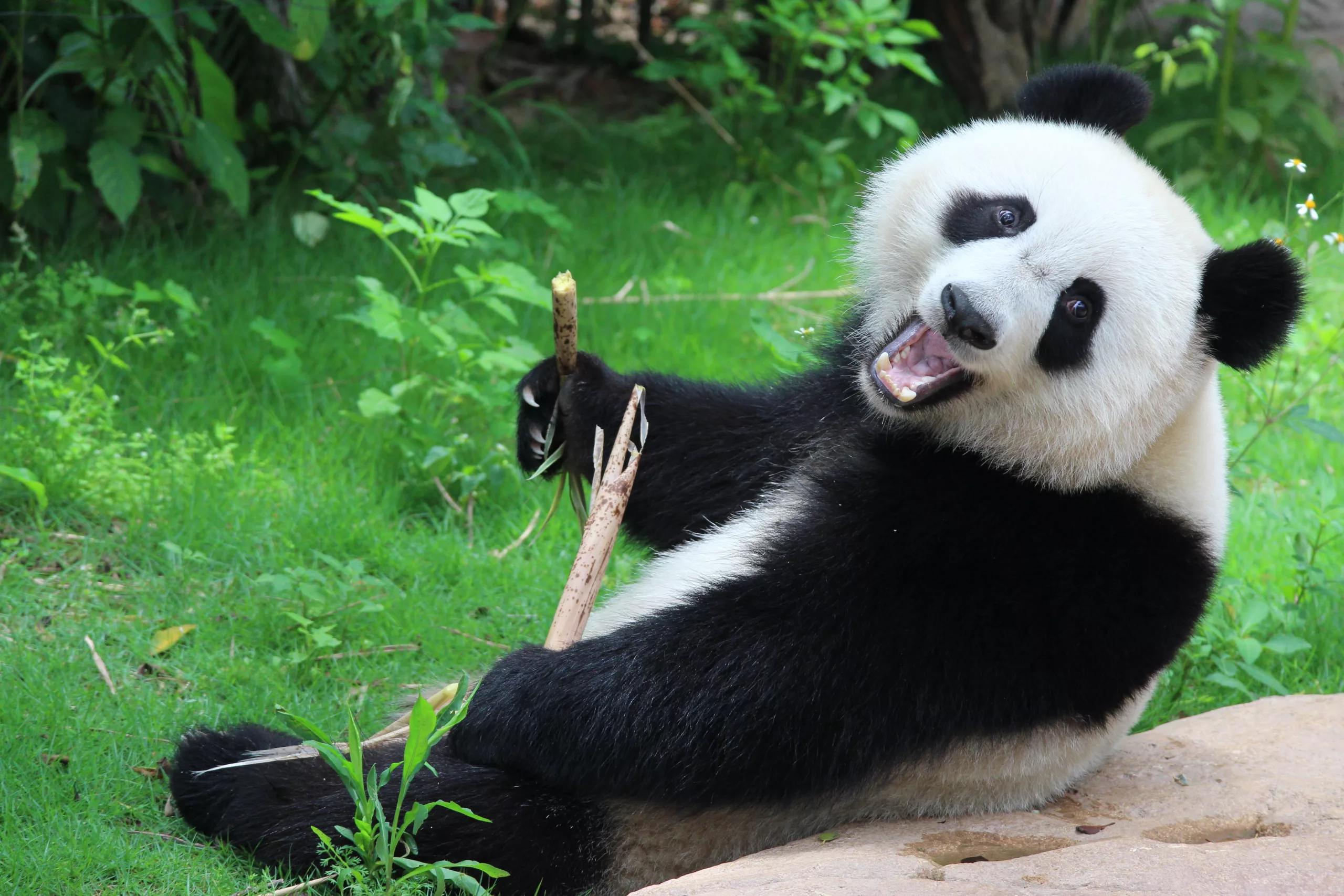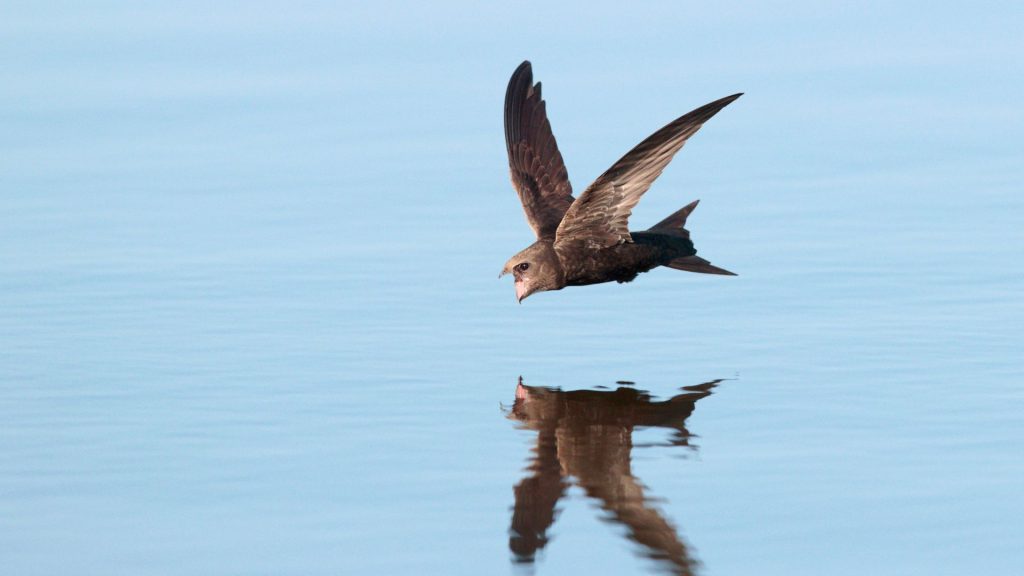Edinburgh Zoo’s beloved giant pandas Tian Tian and Yang Guang have returned to China. Their twelve-year stay has been a triumph for wildlife conservation and China-Scotland co-operation, while, as the UK’s only resident pandas, the pair have been a huge draw for Scottish tourism too. To mark the end of their stay, it’s worth diving into their story.
How did Edinburgh get pandas?
Tian Tian (which means ‘Sweetie’) and Yang Guang (‘Sunshine’) landed at Edinburgh airport on a specially-chartered jet just before Christmas 2011, to be greeted by a pipe band and taken to their new enclosure. Negotiations had taken five years, and the agreement was signed to celebrate a series of successful trade deals between China and Scotland involving salmon export, oil extraction, and wind turbine technology.
The two settled quickly, and went on display to the public in early 2012. But they weren’t just here for the tourists: Tian Tian, the female, had a record of successful pregnancies, and it was hoped that the two might contribute to Edinburgh Zoo’s nascent panda breeding scheme. Unfortunately, multiple rounds of artificial insemination were unsuccessful, and Yang Guang made for a poor panda stud. Tian Tian may have become pregnant several times during her stay, but no pregnancy was ever carried to term. However, the two proved excellent research subjects, and an entire generation of zoologists and zookeepers has gained valuable experience looking after them.
What next for the pair?
The original contract for the pandas was for ten years, and they were due to return home in late 2021. However, Covid intervened, and it wasn’t possible to return them due to travel restrictions. Happily, a deal was struck to extend the contract. They could have stayed longer, but Edinburgh Zoo, starved of revenue during the lockdowns, could not afford to renew the lease (pandas aren’t free; they’re rented out at £750,000 a year, plus feeding expenses).
The two will return to China in December, with their Scottish keepers accompanying them for the first few months to help them settle in, and pass on what they’ve learned, including tips on dealing with the bear’s distinct personalities. Speaking to a keeper last year, I was told that Yang Guang is considered laid-back, even by panda standards, but Tian Tian was described as ‘an absolute diva’, and particularly fussy about her food.
Exact details of the transfer have yet to be announced, but they will probably go to a research station in Sichuan, a mountainous, heavily-forested province in China’s southwest and site of most of the panda’s natural habitat. Alternatively, Tian Tian may be returned to Beijing Zoo, where she was born, and in turn gave birth to twins. Once home, they will see out their retirement: at 20, both are in their late middle age, and too old for breeding; while having been born and raised in captivity, neither is capable of living in the wild. Diehard fans of the duo should still be able to see them in the future, if they can make it to China: most research stations double as panda theme parks to help cover costs.
After Tian Tian and Yang Guang leave, the UK will be panda-less for the foreseeable future. Sadly, there are no plans to replace them, either in Edinburgh or south of the border. But, while they may be the last pandas for some time, they were not Britain’s first.
Emperors, hunters and revolutions: the panda in history
Giant pandas are one of just eight species of bear left in the world today. (Neither the red panda nor the koala are actually bears; they are closer to racoons and wombats). They are also one of the more ancient and distinct members of the bear family: not only do pandas not act or look at all like other bears, but they have been that way for at least 2 million years, while their now-extinct predecessors diverged from the common ancestor of all bears a staggering 19 million years ago.
For most of history, pandas and humans co-existed quite peacefully – mainly because pandas are naturally bone-idle. They are solitary, reclusive, peaceful, vegetarian, and have no predators. They overwhelmingly prefer a quiet life in distant mountain bamboo groves, and rarely interacted with humans until the modern era: although some Sichuanese folklore mentions ‘metal eating bears’ who would descend from the mountains to snack on woks, nails and farm tools, this behaviour has never been observed in contemporary pandas, and it is unclear what link, if any, there may be.
Although they have become a national icon, there are surprisingly few references to pandas in classical Chinese literature or art. They don’t feature in the zodiac calendar – something even the rat achieved – but the imperial court in Chang’an (today’s Xi’an) was aware of them. Two emperors – Emperor Wen of Han and his mother, Empress Dowager Bo – were buried with pandas in the second century BC, while the bears were dispatched as diplomatic gifts once or twice during the seventh-century Tang dynasty, but otherwise they appear to have just been a curiosity, one among many, and do not appear to have made much of an impact.
This changed in the early twentieth century, when western hunters began making inroads into China’s mountainous southwest. At first, only dead pandas could be found, shot by local hunters. But their unusual appearance and lifestyle sparked a new wave of interest, and a motley band of desperadoes and adventurers decided to capture a panda alive.
Ruth Harkness, an eccentric American socialite, acquired a cub, Su Lin, in mysterious circumstances in 1936, and took her to Chicago, where she proved a smash hit (even Al Capone got a day pass from prison to visit). Another American, Floyd Tangier-Smith – who had given up a successful career in banking to hunt pandas – managed to round up six in Chengdu in 1937. By now, the Japanese invasion of China was in full swing, and the Yangtze River had become impassable, so Tangier-Smith was forced to move his pandas overland, through bandit-infested mountains, to British Hong Kong. One died along the way. Eventually, the ex-banker and his bears surfaced in Germany, where he sold off two before making his way to London. He sold the remaining three to London Zoo – which renamed them Tang, Sung and Ming, after Chinese imperial dynasties – and then promptly disappeared from the historical record. The three bears, although wildly popular, did not survive the war; Tangier-Smith hadn’t known what to feed them, and nor had their keepers.
In response to hunters like Harkness and Tangier-Smith, the Chinese government passed a blanket ban on panda hunting, and assumed responsibility for all remaining bears. In short, all living pandas would now belong to China. These policies were carried on after the Communist victory in 1949. Now a new era had begun: that of panda diplomacy.
What is panda diplomacy?
Pandas have long been used as gifts: during the seventh-century Tang Dynasty, the Empress Wu Zetian, the only woman to ever rule China in her own right, sent two to Japan. Between 1941 and 1984, the Chinese government continued this tradition, dispatching pandas gratis to mark diplomatic exchanges. The first were sent to the US in 1941 by the Nationalist government as a thank-you for war aid; after the 1949 Revolution, the Communist government sent pandas to allies in North Korea and the Soviet Union. Later, more bears were sent to the UK and US as ties improved – a pair were sent to Washington after Richard Nixon visited Beijing in 1972 to reopen diplomatic relations. During a state dinner, his wife Pat had mentioned in passing to her host, premier Zhou Enlai, that she found pandas endearing. He apparently replied, ‘I’ll give you some, then’. Zhou was a man of his word: two wild pandas, Ling Ling and Xing Xing, were soon sent to Washington. (As a thank you, the Nixons sent two musk oxen back).
Following the ascendancy of Deng Xiaopeng in the 1980s, China embraced economic reforms, and there was a change in policy. After 1984, the pandas would not be gifted, but instead loaned out for a fee. The standard contract terms are now for $1 million a year, usually for ten years. Today, China legally owns every panda in the world, and can reclaim them if needed. Any panda born overseas automatically belongs to China, as do any biological products produced during research – blood samples, bodily fluids, and the like. Baby pandas are supposed to be returned home at age two.
China continues to use pandas as a tool for soft power: the bears are loaned to countries with whom they have good relations, and can be refused or recalled if things go south. For instance, after years of bad blood, the US will soon be entirely without pandas; while Singapore, Finland, Russia, Malaysia, Indonesia and South Korea have all recently received new bears. Pandas are often used as a quid pro quo for trade deals or diplomatic recognition – as seen in Scotland, with Tian Tian and Yang Guang arriving shortly after a series of trade deals were signed.
But whatever their diplomatic role, many conservationists agree that international exchanges are the best way to deal with a bad situation. The panda is threatened, and uniquely vulnerable. Without human intervention, it would quickly go extinct. So, while it would be best to rebuild wild populations – and plans are underway to do this – for now, panda conservation is still in survival mode. Shipping bears overseas for both research and display builds awareness of their plight, allows international scientific co-operation and knowledge-sharing, and generates valuable income for the research stations to continue their work.
Why are pandas threatened?
The panda is quite literally the face of animal conservation – the World Wildlife Fund has used it as a mascot since its founding in 1961. This is, in large part, simply because they’re so cute: declining insect numbers are an equally pressing issue for conservationists, but good luck drumming up funds with a swarm of flies for a logo. Pandas are fortunate in that, by a quirk of evolution, they have come to possess nearly every attribute that humans are conditioned to find appealing: round faces, big eyes, Mickey Mouse ears, fluffy fur, and an amiable, clumsy manner (there’s a reason that the plural for a group of pandas is ‘an embarrassment’). They have hacked our brains, more or less – pandas trigger the same automatic protective reflex that our own infants do.
But while pandas may be supremely well-adapted for getting humans to coo over them, they are rather less prepared for surviving independently. The more scientists discover about the bear, the more we are all forced to admit that the famous English curmudgeon AA Gill might have been right: pandas don’t particularly want to seem to stay alive.
Pandas are among the most spectacularly lazy creatures on earth. They demonstrate almost no interest in anything beyond eating and sleeping – and nearly no interest in breeding and reproduction. Pandas just can’t be bothered with sex. Females are fertile for just seventy-two hours a year. Male pandas, to put it bluntly, all have ED. Breeders are often left dismayed when, after huge effort has been put in to get two pandas to mate (several research stations in China have admitted that their methods including showing their charges ‘panda pornography’ to get them in the mood, begging the question of just what exactly that looks like), the male wanders off halfway through to get more bamboo, then promptly falls asleep. The majority of natural couplings don’t result in pregnancy; when they do, it’s common for the female to reabsorb the foetus. Most pandas born in captivity are the product of carefully-timed artificial insemination (and you thought your job was bad). Even if a baby panda is conceived, carried to term, and born healthy, the problems have just begun.
Baby pandas are born premature, partially blind and hairless, about the size of a small mouse – and so fragile that their mothers have to keep them in their mouths at first, like a baby in an incubator. Even then, mother pandas frequently lose interest in their offspring after the first twenty-four hours. If they give birth to twins, which is common, they usually abandon the weaker one to die. If they make it past the first few days, the bears will then have to fuel a 900-fold size increase, in less than three years, almost entirely on bamboo (and a little milk, to start).
Everyone knows that pandas eat bamboo, but few appreciate the implications of this. Pandas, despite their ancient ancestral divergence, are still bears – and have a bear’s teeth and digestive tract. Devotees of Alaska’s Fat Bear Week will be familiar with the normal diet of grizzlies – a healthy, mixed range of salmon, nuts, tubers and berries. Most other bears follow a similar pattern. The panda, although it still has the body of its ancestors, couldn’t be more different. Its retiring nature and preference to avoid competition for resources have led it to choose a diet that is 99% bamboo. Now, it is stuck in an evolutionary rut – pandas have eaten bamboo for long enough that they can’t really eat anything else, but their digestive tracts don’t seem to have caught up to the new diet yet. The panda stomach barely breaks down the starchy plants, and the intestine is awful at nutrient absorption. Panda scat is testament to this: it’s fairly inoffensive to clean up and deal with, because it looks (and smells) like what it is: partially digested bamboo. The same, however, isn’t true of the pandas themselves: those at Foping Panda Reserve in Shaanxi like to roll around in horse dung to help with thermoregulation.
Bamboo is a notoriously poor foodstuff. While many of us will have eaten the tender shoots as an ingredient at Chinese restaurants, it’s safe to say that few humans – or indeed animals – have ever thought of trying to subsist entirely on it. Mature bamboo is starchy, tough, and low in available calories, so the panda must eat up to 40 lbs a day just to stay alive. Because of this imbalanced, low-nutrient diet, they then spend most of the day asleep – up to eighteen hours, in some instances – or in low-energy activities. There’s a reason that, when one goes to see Tian Tian and Yang Guang, they’re usually asleep, or sat on their rears munching bamboo.
And it doesn’t end there. While China has five hundred different species of bamboo, all with similar nutritional and mineral content, pandas will only eat sixty of them. If they can, they prefer to limit themselves to just three varieties. Tian Tian and Yang Guang’s bamboo has to be grown specially in a greenhouse in the Netherlands and trucked over regularly – and, according to their keepers, even getting Tian Tian to eat this was a struggle at first.
There’s a further, tragic, complication. Bamboo has a surprisingly lengthy lifecycle, and every forty to eighty years, depending on species, it comes into flower. But by an unfortunate quirk in botany, blossoming bamboo is acutely toxic to pandas. In the 1980s, tragedy struck. Two different species of bamboo in Sichuan went into flower at the same time. Both were favourites of the panda. While in earlier flowering seasons, the pandas could have migrated to new ranges, by the 1980s China was industrialising rapidly, and the bears found themselves competing for the hills with humans for the first time: bamboo groves were being cut down, and new roads and towns built. Instead, the pandas began to starve. At least 250 died – a critical number. The deaths were soon noticed: a rescue mission found that in some districts, as many as 80% of the wild population were wiped out. As many surviving bears as could be found were rounded up and taken into care. One of the most extraordinary conservation stories of the twentieth century was about to begin.
How China saved the panda
After the bamboo flowering disaster, a comprehensive survey of pandas found that barely 1200 remained in the wild. Human expansion was threatening them, and their natural range had been reduced from seventeen Chinese provinces to just three: Sichuan, Shaanxi, and Gansu. Even then, most lived in Sichuan. To counteract this, a two-pronged approach was taken: there would be an intensive breeding programme to rebuild the population, and a major effort to regrow the bamboo forests that allowed pandas to thrive.
The survivors taken into captivity were carefully studied, and huge amounts of data were collected. It is remarkable to find that much of what we know about pandas was not confirmed until as late as the 1980s, as the result of this programme. The move towards captive breeding and artificial insemination is best thought of as an insurance policy, should forest restoration not work out. Today, there are about 300 pandas in captivity; usually around 50 are overseas at any one time. Captive breeding is more important than ever today, as there are concerns that wild pandas may be becoming inbred due to a restricted gene pool. The captive breeding programme allows research stations to swap pandas, and improve genetic diversity. A handful are kept as isolated as possible from humans – their keepers dress as pandas – and trained to live in the wild before being released to rejuvenate wild populations. This has had mixed success: the first bear to be released, Xiang Xiang, was beaten to death by wild males; while another promptly rolled off the edge of a cliff and killed himself.
But the principal effort is focused on restoring the panda’s natural habitat. Just north of Chengdu, a giant new panda park has been planned along the base of the Daxue and Qinling mountains. At 10,500 square miles, it is about twice the size of Fife, and will join up a number of existing reserves, and bring previously separate organisations under one central command. Within its boundaries, there will be a ban on agriculture, mining and logging. Nor is it meant to be a tourist trap: photo-hunting tours will also be prohibited. Every effort is being made to leave the pandas in peace. However, it is not without a human cost: several thousand people may have to be moved.
Even with all this effort, the reforestation programme, and the fate of the wild panda, face one enormous, inescapable challenge: climate change. China, like everywhere else in the world, is heating up. Bamboo groves are vulnerable to temperature changes, and if current trends continue, as much as 80% of it may die off before the end of the century. Even if it survives, another mass flowering is due soon. Those who came to love Tian Tian and Yang Guang during their stay in Scotland should keep all this in mind. The panda will only survive with the most dedicated human attention.
- Sean Patersonhttps://asiascot.com/author/sean-paterson
- Sean Patersonhttps://asiascot.com/author/sean-paterson
- Sean Patersonhttps://asiascot.com/author/sean-paterson
- Sean Patersonhttps://asiascot.com/author/sean-paterson







